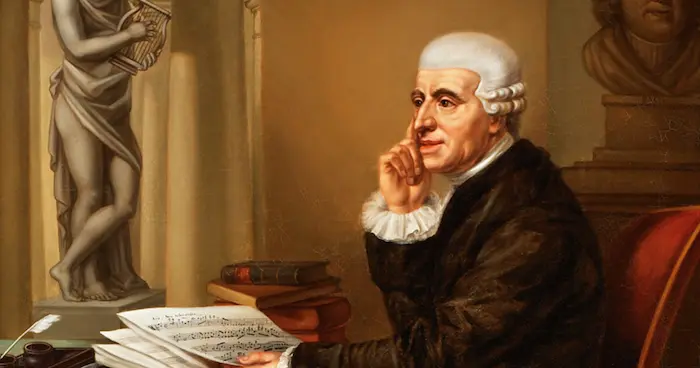In the realm of classical music, the term “divertimento” refers to a specific genre that originated in the 18th century. The word itself is derived from the Italian “divertire,” which means “to amuse” or “to entertain.” True to its name, the divertimento was designed to be light, entertaining, and often performed at social gatherings. It is characterized by a multi-movement structure, typically comprising between three to ten movements. These movements could include a variety of forms, such as dances, marches, and even more serious movements like minuets and slow movements.
I. Origins and Development
1. Early Beginnings
The divertimento emerged during the Classical period, a time when composers sought to create music that was enjoyable and accessible to a wide audience. Unlike the more serious symphonies and sonatas, divertimenti were composed with the intention of providing light entertainment. They were often played in outdoor settings, at garden parties, or as background music during meals.
2. Influence of the Serenade
The divertimento is closely related to the serenade, another genre that was popular during the same period. Both genres share a similar purpose and structure, often featuring multiple movements and a light-hearted character. However, the serenade was typically intended for evening performances, while the divertimento could be performed at any time of day.
II. Structure and Form
1. Multi-Movement Format
A typical divertimento consists of several movements, usually between three and ten. These movements can vary greatly in style and form, providing a diverse and entertaining listening experience. Common movement types found in divertimenti include:
Allegro: A fast, lively movement that sets an upbeat tone.
Andante: A slower, more relaxed movement that offers contrast.
Minuet: A dance movement in triple meter, often graceful and elegant.
Rondo: A movement characterized by a recurring theme interspersed with contrasting sections.
2. Instrumentation
The instrumentation of a divertimento can vary widely. Some divertimenti are written for string ensembles, while others include wind instruments, brass, and even percussion. This flexibility in instrumentation allows for a wide range of tonal colors and textures, contributing to the genre’s appeal.
III. Notable Composers and Works
1. Wolfgang Amadeus Mozart
Wolfgang Amadeus Mozart is perhaps the most famous composer of divertimenti. His works in this genre are exemplary, showcasing his ability to blend light-hearted entertainment with musical sophistication. Some of his notable divertimenti include:
Divertimento in D Major, K. 136: This work is one of three divertimenti composed by Mozart during his youth. It features a lively first movement, a lyrical second movement, and a spirited finale.
Divertimento in B-flat Major, K. 137: Another early work, this divertimento is characterized by its elegant melodies and balanced structure.
Eine kleine Nachtmusik, K. 525: Although often categorized as a serenade, this piece shares many characteristics with the divertimento and remains one of Mozart’s most beloved works.
2. Joseph Haydn
Joseph Haydn, often referred to as the “Father of the Symphony,” also made significant contributions to the divertimento genre. His divertimenti are notable for their charm and wit. Some of his well-known works include:
Divertimento in G Major, Hob. II:9: This piece, scored for strings and winds, is characterized by its playful melodies and lively rhythms.
Divertimento in C Major, Hob. II:11: Featuring a mix of string and wind instruments, this work showcases Haydn’s ability to create engaging and varied musical textures.
IV. The Role of the Divertimento
1. Social and Cultural Significance
The divertimento played a crucial role in the social and cultural life of the 18th century. It provided a form of entertainment that was accessible and enjoyable, serving as a backdrop for social gatherings and events. The light and engaging nature of the divertimento made it ideal for such occasions, where the primary focus was on enjoyment and relaxation.
2. Educational Value
In addition to its entertainment value, the divertimento also served an educational purpose. Many young composers and musicians of the time used the genre as a means of honing their skills. The relatively simple and straightforward structure of the divertimento allowed for experimentation and practice, making it an important stepping stone in the development of many classical musicians.
V. Evolution and Legacy
1. Changes Over Time
As musical tastes and styles evolved, so too did the divertimento. By the end of the 18th century, the genre began to decline in popularity, giving way to more complex and serious forms such as the symphony and the string quartet. However, the divertimento’s influence can still be seen in many later works, particularly in the lighter, more playful movements of larger compositions.
2. Modern Interpretations
In the 20th and 21st centuries, composers have occasionally revisited the divertimento, often as a means of exploring lighter, more accessible forms of expression. Some notable modern divertimenti include:
Béla Bartók’s Divertimento for String Orchestra: Composed in 1939, this work blends the traditional divertimento form with Bartók’s distinctive style, featuring rich harmonies and complex rhythms.
Leonard Bernstein’s Divertimento for Orchestra: Written in 1980, this piece is a tribute to Bernstein’s hometown of Boston and showcases his characteristic wit and energy.
See Also: Exploring Semi-Classical Music: A Fusion of Tradition and Innovation
VI. Conclusion
The divertimento remains a fascinating and important genre within the history of classical music. Its light-hearted nature and flexible structure allowed composers to experiment and entertain, creating works that continue to delight audiences today. From its origins in the 18th century to its modern interpretations, the divertimento has left a lasting legacy as a genre that embodies the joy and elegance of classical music.
By understanding the divertimento, we gain insight into the cultural and social contexts of the 18th century, as well as the creative processes of some of history’s greatest composers. Whether performed in a grand concert hall or a simple garden party, the divertimento’s charm and appeal continue to resonate, reminding us of the enduring power of music to entertain and uplift.

